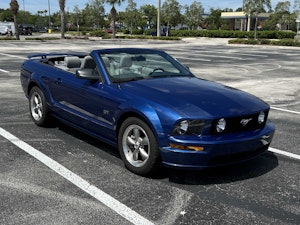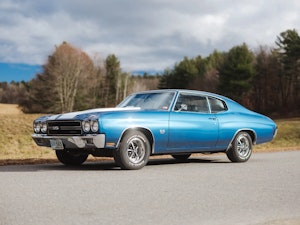Media | Articles
Should we embrace extended-range EVs while the ultimate battery is still out of reach?
Despite a wealth of optimism in the EV segment as of late, a hard practical reality remains: The infrastructure necessary to support our short- and medium-term goals of eliminating traditional, petroleum-fuel powertrains from our street is, at present, entirely inadequate. Two states—and California, Massachusetts—have revealed plans to ban the sale of new petroleum-fuel-powered cars by 2035, and New Jersey has set a similar goal. More states are surely soon to follow. Several OEMs have committed to similar phase-out timelines for combustion engines production.
Between the pure-electric scenario of the future—complete with longer-range batteries—and our current state of largely combustible power exists a small segment vehicles that aim to split the difference: extended-range EVs with onboard gas engines. As more and more all-electrics enter a charging landscape ill-equipped to support them, are these hybrid vehicles a viable bridge between technologies?
Used in the Japanese market’s extended-range Note hatchback since 2016, Nissan’s highly successful e-Power system makes a strong argument for consideration. Unlike a traditional hybrid, which relies on engine power as a primary means of driving the wheels, extended-range EVs are essentially like an all-electric vehicle with a built-in gas generator. Extended-range EVs use electric motors for drive power and rely on combustible fuel as a source of energy for a depleted battery, which can otherwise lap up electricity from a wall outlet or public charger. Nissan’s next-generation e-Power technology, currently in development, is particularly compelling because it reflects a thorough re-think of the internal combustion automobile engine, tailor-made for use in this context.

Before we dive into fully into e-Power, let’s pause for a primer on the state of motive power on public roads. Imagine the current range of powerplants in passenger vehicles as existing on a spectrum, bookended on one end by internal combustion engines using only petroleum fuels and on the other by pure battery-electric vehicles. Between those two extremes we’d find the various hybrid configurations currently offered in the marketplace. These setups scale from traditional parallel hybrids (like the Toyota Prius, that use their internal combustion engines as the primary motivator) to series-parallel hybrids such as the now-defunct Chevrolet Volt, in which the bias shifts to the electric motor being the primary motivator and the combustion engine assisting in only limited conditions where it can be most efficient—usually highway cruising. Last we come to series-hybrids, like Nissan’s aforementioned e-Power, where there’s no motive assistance from the on-board engine; only an electric motor(s) powers the wheels, and the combustion engine functions solely as a range extender.
Marketplace
Buy and sell classics with confidence

Nissan is making the most of this situation by totally overhauling and optimizing the e-Power’s next-generation range-extender engine. Frankly, this sounds like a marvelous piece of engineering. Without the need to supply power across a wide range of vehicle speeds, the bespoke 1.2-liter three-cylinder is able to focus on thermal efficiency instead, extracting as much energy as possible from each drop of fuel. The e-Power system is remarkable in that it achieves 50 percent thermal efficiency—practically unheard of in a production car. Doing so reduces cuts the carbon footprint of the series-hybrid driveline, hopefully reducing the public’s perceived penalty that comes with an on-board range-extender rather than a larger battery pack.
Some context: Currently, the average combustion engine operates at around 30 percent thermal efficiency, meaning that for every unit of fuel that goes in, roughly two thirds of it is wasted in excess heat (and mechanical losses in the driveline). Toyota’s Dynamic Force family of engines shook the market in 2018 when it achieved 41 percent efficiency, but Nissan aims squarely for the 50 percent mark with its future e-Power engine. Unlike Toyota however, which still relies on combustion engines to provide power to the wheels, Nissan’s electric-only drivetrain, making it the benchmark for series hybrids.
Another useful measurement in this context is Brake Specific Fuel Consumption, which is a map that displays fuel consumption over a given engine speed and load. Today’s drivers generally expect steady and even power delivery regardless of the engine’s rpm. In order to provide this, engines must be able to generate adequate torque at low rpm while still sustaining enough horsepower over its entire rev range so that on a freeway on-ramp the vehicle doesn’t feel like it’s falling on its face while waiting for the afterburners to light. Engineers have to find a compromise between the desired power delivery and the demands of fuel efficiency, which is no easy task. In a combustion engine, the shape of the intake/exhaust ports, the profile of the camshaft, the bore and stroke—plus several other hard-set factors in an engine’s design—are fixed, meaning that the engine operates most harmoniously and efficiently at one particular engine speed and load. Anything outside of that—think accelerating quickly to match traffic speed on that same highway on-ramp—comes at the expense of efficiency.

Note: It’s fair to point out that variable valve controls, intake manifolds, and now connecting rod assemblies (thanks to Nissan’s own variable-compression engines) can widen this peak efficiency range by physically shifting an engine’s internals around to suit the given situation. These technologies, however, increase cost and complexity at the potential expense of reliability and ease of service.
Because Nissan’s e-Power three-cylinder does not drive the wheels, performance in variable conditions is much less of a concern; its only job is to operate at peak efficiency for the purposes of spinning the generator. The stroke can be longer, so the engine can take deeper breaths that along with the intake ports create a circular flow in the cylinder. In turn, this helps to drive out spent exhaust gasses while better distributing fresh air before it is squeezed into the combustion chamber, around the direct-injection nozzle and spark plug. In a series-hybrid application the engine experiences less load and can utilize a higher compression ratio with greatly reduced risk of detonation, which also means leaner fuel mixtures can be achieved without knock.
Nissan’s triple-piston wonder only spins at idle and roughly 2500 rpm, spending very little, if any, time outside of its peak efficiency range while under load from the generator. Hell, even lopping off the usual fourth cylinder has its own merits, reducing the friction and total rotating mass of the internals. An engine that is more thermally efficient, and does a better job of converting the energy of its fuel into usable work, can be made smaller and lighter. In the current Note, Nissan even uses sensors throughout the vehicle to detect when it’s driving over rough roads, prompting the engine to activate under the cover of NVH to sneak in a little run time undetected for a bit of extra battery juice. The whole package is clever, almost so sensible that it’s a shocker that the market hasn’t embraced this kind of approach.
Here’s the catch. North America is the land of the freeway, and here we expect relentless 70-80 mph performance from all cars. Electric motors, however, eventually begin to lose torque and require more voltage to spin at higher rpms, meaning that sustained freeway use (especially without a transmission with additional gears) is their least efficient area of operation. This reality has presented a kind of fork in the road for several hybrid products over the years, most controversially the Volt. Billed as GM’s first series hybrid during the initial concept phase, the Volt ultimately ended up utilizing a mechanical link between the combustion engine and wheels in order to aid the electric motor at freeway speeds. This, of course, shocked the automotive press in 2009, who refused to embrace this setup as the ideal solution for efficiency. (As we’ve discussed, combustion engines are most efficient in steady-state situations, not as an assistive motivator in particular situations.)
Anyone who’s driven an EV between city and freeway use has likely noted this precipitous drop in battery charge, and it remains a concern for true series-hybrid powertrains like Nissan’s e-Power. The Nissan Note is only sold in Japan, where the focus is on short-distance driving and city duty rather than sustained high-speed highway travel. For now, Nissan positions e-Power as a stop-gap solution until battery and charging technology catch up with consumer demand, and it seems like we will have to wait longer to find out if the Japanese automaker plans to bring it to our shores. “Nissan North America is investigating alternative or hybrid powertrains, including [e-Power], for all Nissan vehicles in the U.S. lineup,” states Dan Passe, Nissan’s Director, Product Communications. “And our focus remains on providing vehicles and technologies tailored for the marketplace. Nissan Motor Co., Ltd. has set the goal to achieve carbon neutrality across the company’s operations and the life cycle of its products by 2050. As part of this effort, by the early 2030s every all-new Nissan vehicle offering in key markets—including the U.S.—will be electrified.”

Nissan isn’t alone here. Until all OEMs make up their minds on how to approach the next 15 years of powertrain development, before the hammer of regulation does its best to crush petroleum fuels, we’re going to see a lot of different strategies play out. Maybe an extended-range series-hybrid EV isn’t ideal given typical drop in highway range, but in a nation that’s petrified by range anxiety and engaged in political war over infrastructure investment, the technology seems like a rock-solid alternative to pure-electrics like the Leaf, which still suffers some of the lowest-in-class range for an EV. Petroleum-powered engines don’t have to entirely vanish to dramatically reduce emissions, especially if they’re comprehensively reengineered and reimagined in the way Nissan is doing with e-Power.
Note: An earlier version of this story mischaracterized plans to phase out sale of new petroleum fuel-powered cars in Massachusetts, California, and New Jersey. The measures do not call for a ban on selling these fuels specifically.














